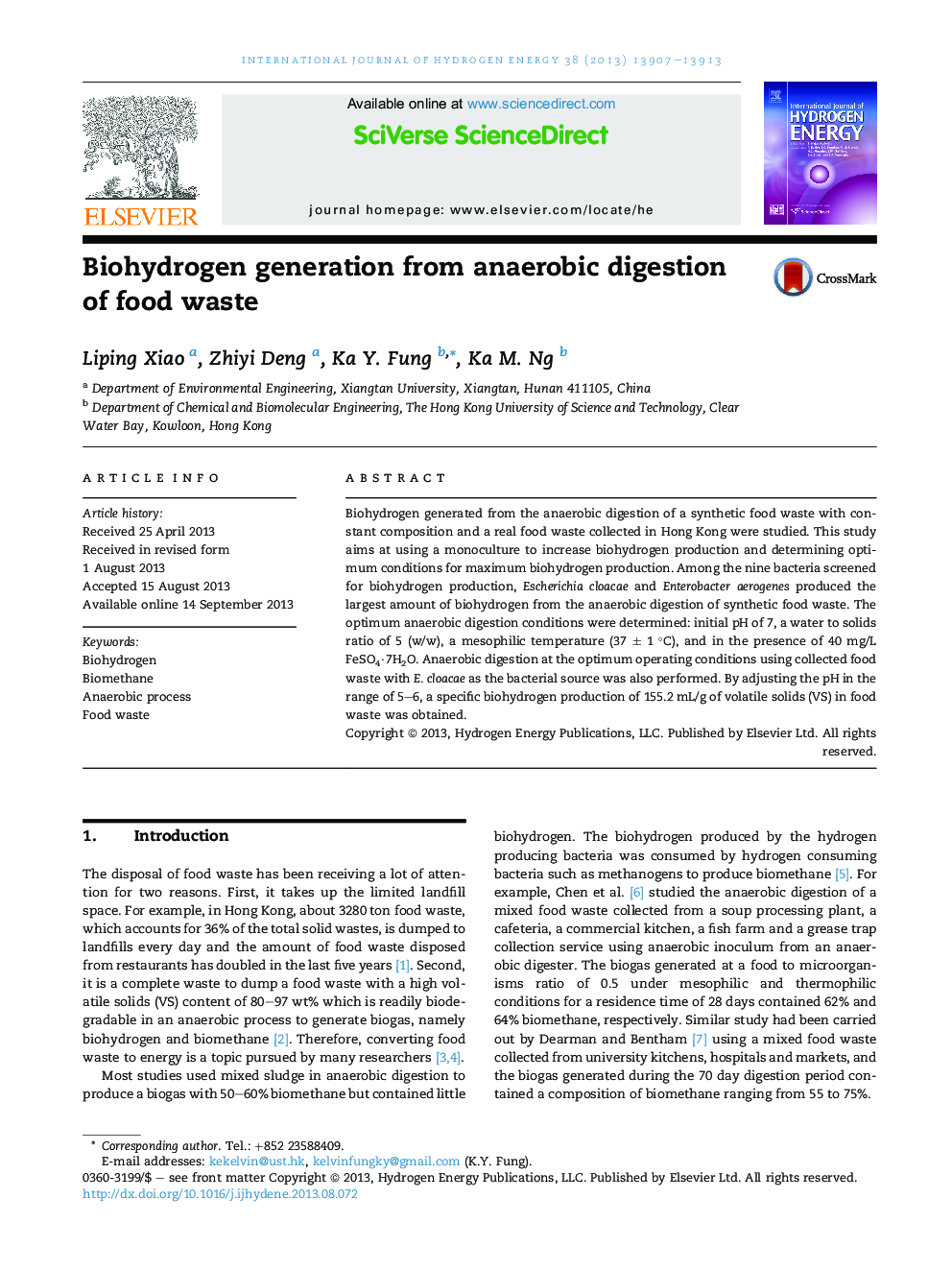| Article ID | Journal | Published Year | Pages | File Type |
|---|---|---|---|---|
| 1273061 | International Journal of Hydrogen Energy | 2013 | 7 Pages |
•Escherichia cloacae and Enterobacter aerogenes produced the most hydrogen.•Operating parameters such as water to solids ratio and temperature were studied.•A relatively stable pH is important for hydrogen production.•155.2 mL H2/g of volatile solids was produced by E. cloacae.
Biohydrogen generated from the anaerobic digestion of a synthetic food waste with constant composition and a real food waste collected in Hong Kong were studied. This study aims at using a monoculture to increase biohydrogen production and determining optimum conditions for maximum biohydrogen production. Among the nine bacteria screened for biohydrogen production, Escherichia cloacae and Enterobacter aerogenes produced the largest amount of biohydrogen from the anaerobic digestion of synthetic food waste. The optimum anaerobic digestion conditions were determined: initial pH of 7, a water to solids ratio of 5 (w/w), a mesophilic temperature (37 ± 1 °C), and in the presence of 40 mg/L FeSO4·7H2O. Anaerobic digestion at the optimum operating conditions using collected food waste with E. cloacae as the bacterial source was also performed. By adjusting the pH in the range of 5–6, a specific biohydrogen production of 155.2 mL/g of volatile solids (VS) in food waste was obtained.
